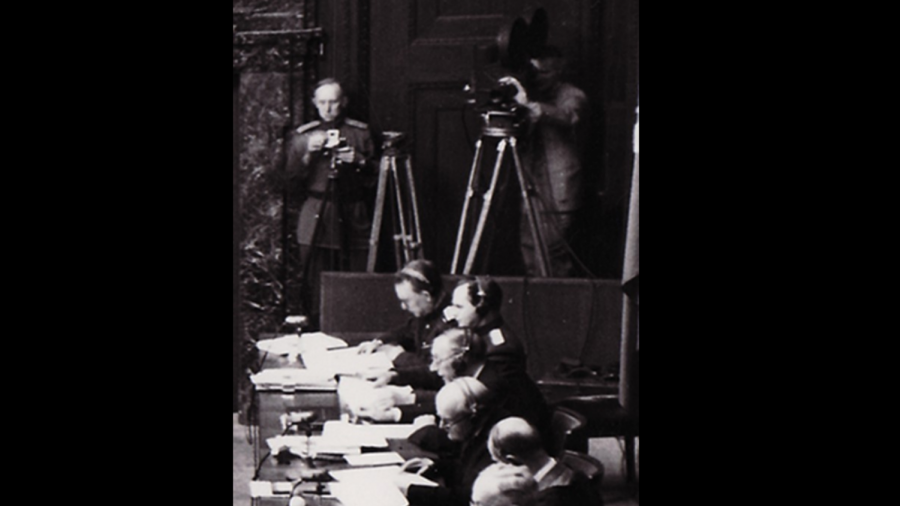75 years after Nuremberg, America’s top Nazi hunter looks back
Published June 7, 2021
This story originally appeared on The Forward
Seventy-five years after the Nuremberg trials, the man many call the world’s foremost Nazi hunter is still on the job.
There may have been more famous Nazi hunters — think Simon Wiesenthal — but none have successfully prosecuted more World War II-era war criminals than Eli Rosenbaum and his team. The Northern Virginia attorney is marking nearly 40 years of service in the Department of Justice agencies charged with keeping former Nazis out of the United States.
In April, on behalf of the department’s Office of Special Investigations (OSI) and its successor agency — the Human Rights and Special Prosecutions Section — Rosenbaum, 66, accepted the prestigious Elie Wiesel Award from the United States Holocaust Memorial Museum.
The museum credited the agencies for investigations and prosecutions that led to more than 100 Nazis’ denaturalization, removal, or extradition from the U.S.
Rosenbaum has never liked the title “Nazi hunter.” The term, he said, “makes it sound like it’s a sport, a game — something that amateurs can do.”
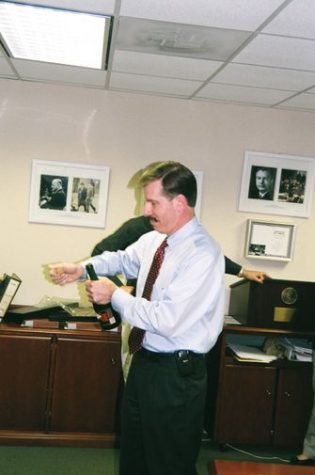
Eli Rosenbaum opens a bottle of champagne at a staff gathering after the deportation of John Demjanjuk in May 2009, the successful conclusion of one of OSI’s highest-profile cases.
He and his colleagues pride themselves on the painstaking research and intricate legal work that undergird every case they prosecute. Unearthing painful truths, they have made international headlines, and in some cases forced a rewriting of history.
Among the former Nazis, he’s pursued are Josef Mengele, the doctor who ran brutal experiments at Auschwitz, U.N. Secretary-General and later Austrian President Kurt Waldheim; Alexander Lileikis, the head of the Lithuanian collaborationist police force during the German occupation of Vilnius, and V2-rocket designer Arthur Rudolph, known as a Nazi “slave master.”
Earlier this year, in what may have been one of the Justice Department’s final cases against a Nazi-era war criminal, Rosenbaum led the investigation into Freidrich Karl Berger, a German soldier who allegedly guarded a concentration camp and patrolled a death march that claimed the lives of 70 people.
Berger, 95, was deported to Germany in February.
Rosenbaum rejects the argument that the U.S. should not pursue people in their nineties for crimes they committed in their twenties.
“The passage of time also in no way diminishes the culpability of the people involved,” Rosenbaum said. “We have to think of the fact that there are still survivors alive all over the world who weep for lost parents and lost siblings. There are family members who still cry for the grandparents they never met.”
A subject that just wasn’t raised
Though he was the child of German Jews who both fled Europe shortly before World War II began, Rosenbaum’s parents rarely mentioned their pasts.
“In my house, between my two brothers and I and our parents, the Holocaust was not spoken of,” Rosenbaum said. “That was a subject that just wasn’t raised.”
But there were a few childhood experiences that Rosenbaum believes planted the seeds of a career tracking down Nazis.
He was captivated by a TV adaptation of the 1965 Broadway play “The Investigation,” which is based on the minutes of the Auschwitz trials, in which 22 defendants were charged under German law for crimes committed at the Auschwitz-Birkenau death and concentration camps.
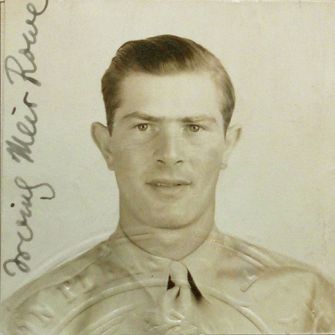
Rosenbaum’s father, Irving Rosenbaum, in 1943. During his U.S. Army service, he went under “Rowe” to be less identifiably Jewish in case of capture. He changed it back to Rosenbaum after the war.
He was also inspired by reading the memoirs of Simon Wiesenthal, the Holocaust survivor who helped prosecutors gather evidence for the Nuremberg trials and other trials of Nazi war criminals.
And he was moved by one of the few conversations in which his father mentioned the Holocaust, during a road trip in the late 1960s.
“My father was talking about his military service, which I knew a little bit about. It started with entertaining stories. You know, the stuff everybody who served in the military can talk to you about, like how bad the food was,” Rosenbaum said. “And then suddenly, he said, ‘You know, I was sent to Dachau, by my commanding officer, the day after its liberation.’”
The younger Rosenbaum naturally asked his father what he had seen.
“And I didn’t hear any response,” Rosenbaum said. “So I looked over at my father, his eyes were laser beamed on the road, thank goodness, but those eyes had welled with tears. And his mouth was open. He was clearly trying to speak and he couldn’t. He was all choked up. That was the first time I’d ever seen my father cry.”
More than a decade passed before Rosenbaum began his career at the Department of Justice. But that conversation had a profound and lasting effect on him, he said, though the two never broached the subject of Dachau with each other again.
A summer internship gone awry
Rosenbaum’s career at the Justice Department began with a newspaper clipping.
He had earned a bachelor’s degree in 1976 and later an MBA at the University of Pennsylvania, expecting to work for his father’s department store chain — which had about 40 stores throughout the country — before segueing into law, and matriculating at Harvard Law School. As a law student, he traveled to Philadelphia for a wedding and noticed an ad in the city’s Jewish Exponent.
“There was a small blurb, really small, that the Justice Department was commencing a comprehensive effort to investigate Nazi criminals in America, and they were setting up a unit, I think it even said the Office of Special Investigations,” Rosenbaum said. “So I thought that’s the summer job for me.”
He called the second he got back to Harvard — at midnight — and by the next morning, he had gotten the gig. By the end of the summer, OSI was ready to hire him upon his graduation.
“So my career, you might say, has been a summer internship gone awry,” said Rosenbaum.
OSI was founded in 1979 — more than 30 years after the end of World War II — following Congress’s passage of the Holtzman amendment.
Introduced by New York Congresswoman Elizabeth Holtzman, the amendment stipulated that “participants in Nazi persecution, genocide, or the commission of any act of torture or extrajudicial killing,” be barred from entry into the United States.
Though the law didn’t give OSI powers of criminal prosecution, because the crimes were committed outside of the U.S., it did empower U.S. officials to deport those involved with perpetrating the Holocaust back to the countries where prosecution was possible.
The law could potentially be used against the hundreds of Nazi-era war criminals who had entered the United States since the end of the war. Some were able to make the U.S. home simply because no one was stopping them. Others came under the aegis of government-backed initiatives like Operation Paperclip, which recruited former Nazi scientists to the American side of the Cold War.
And well before the creation of the OSI, these war criminals were dying off, without facing justice, having lived the full and relatively free lives that they had denied their victims. Wiesenthal had called this undesired outcome the “biological solution.”
So Rosenbaum and his OSI colleagues worked at a rapid pace outrunning death itself.
New methods for old crimes
For OSI lawyers, prosecutions presented unique challenges.
“These cases are among the hardest cases to investigate,” Rosenbaum said. “The crime scenes were ‘cold’ as they say, the crimes were committed in a manner intended to physically eliminate those people who, had they survived, might have been inclined to cooperate with government investigations. The perpetrators didn’t wear name tags, so their names typically weren’t known to the victims.”
And in the closing period of the war, when the Germans knew defeat was imminent, they also did their best to destroy evidence of their crimes.
“So much of the evidence went up in smoke, and the rest of it was scattered in archives all over the world,” Rosenbaum said. Most of those archives, moreover, were in the former Soviet Union, and so closed to Western researchers until its dissolution.
OSI lawyers developed new approaches, including a heavy reliance on historians.
“We became, for several decades, the only law enforcement entity in the Western Hemisphere that had its own complement of historians,” Rosenbaum said. “And these were the people who dove into the archives, searching for the proverbial needle in a haystack. ”
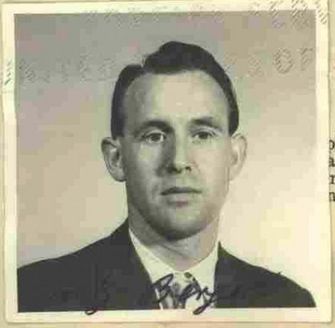
Freidrich Karl Berger in 1959.
The approach proved particularly valuable in the Berger case.
Rosenbaum’s team learned of Berger after a German judge found his name in an archival collection. It was among 1,500 others that had been transcribed from waterlogged index cards found on a German prison ship accidentally bombed by the British Royal Air Force and sunk just before the end of the war, resulting in over 1,000 dead.
The index cards identified the staff of the Neuengamme concentration camp complex in Northern Germany. Of the 1,500, only two were still alive, one of whom was Berger.
“Our subjects and defendants were not the kinds of people whose names you would find in a scholarly or popular work on the Holocaust,” Rosenbaum said. “They were generally lower-level perpetrators or accomplices.”
Changing history
That isn’t to say that OSI didn’t prosecute any big names in its day. The case against Arthur Rudolph was one such example and one of which Rosenbaum is most proud.
Rudolph was an essential part of the German V-2 rocket program under the direction of Werner von Braun. After the war, he was among the many Nazi scientists brought to the U.S. through Operation Paper Clip. At NASA he helped lay the foundations for the moon landing. For his work, he was awarded the agency’s highest honor, the distinguished service medal.
He also happened to have been a profiteer of brutal slave labor.
As operations director of the Mittelwerk mining facility where the V-2 rocket program was based, Rudolph was in charge of thousands of slaves drawn from concentration camps, which included imprisoned Jews, Roma and others.
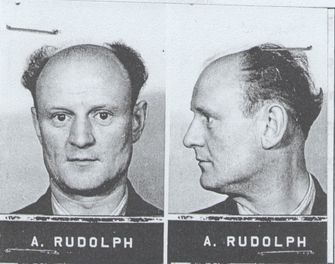
Under the Nazis, Arthur Rudolph directed the slave labor regime at the Mittelwerk mining facility where the V-2 rocket was designed.
Under Rudolph’s direction, between 12,000 and 20,000 died in the production of the V-2 rocket at the Mittelwerk facility, historians estimate — far more than were ever killed by the rocket in its military use.
Rudolph’s U.S. residency had come to Rosenbaum’s attention when he was still in law school, but in his first years at OSI, his superiors were reluctant to take on the case. Despite the passage of the Holtzman Amendment, those brought over through Operation Paperclip were still seen as untouchable.
But Rosenbaum persisted, and in 1984, facing the threat of more serious prosecution from OSI, Rudolph agreed to renounce his U.S. citizenship and left the U.S., barred from ever returning.
The Rudolph case changed history, Rosenbaum said.
“Von Braun was literally the subject of a Hollywood movie, a comic book based on the movie. He was a frequent guest on Walt Disney Sunday shows and so on. If you went to the Air and Space Museum here in Washington, you would see a V-2 missile with no reference to how it was made with slave labor. That’s all changed.”
“Now if you read about von Braun and the rocket team, you learn about their wartime involvement in slave labor, which was a well-hidden secret.”
Challenging Giants
One of Rosenbaum’s most renowned investigations — of Kurt Waldheim, the former U.N. Secretary-General who later became president of Austria — began while he was on a respite from the OSI.
The intensity of his first few years on the job, and interviewing scores of Holocaust survivors about the horrors they had experienced took a toll on him. In 1984 he left the Department of Justice for what he expected to be easier work, first at a private firm and then at the World Jewish Congress.
“I went to the World Jewish Congress as their general counsel, expecting that my so-called Nazi-hunting days were over,” Rosenbaum recalled.
Only a few months into the job, while at the Congress’s plenary assembly in Jerusalem, he learned how wrong he was.
“A senior member of the Austrian Jewish communal leadership came to us excitedly saying that something was fishy in Kurt Waldheim’s background,” Rosenbaum said. The WJC ended up sending him straight from Jerusalem to Vienna.
At first, Rosenbaum was skeptical. Though it was well known that Waldheim had served in the German Army during World War II, Rosenbaum was confident that before his stints as Secretary-General of the U.N. from 1971 to 1982, he would have been vetted. When questions had arisen, even Wiesenthal had spoken out in Waldheim’s defense.
“I thought, how could he have been in the media capital of the world for 10 years as Secretary-General of the United Nations. I know there was whispering about him. But how could he have really hidden from the cutthroat New York press corps, a Nazi past?” Rosenbaum said. “I was very dubious. I was wrong.”
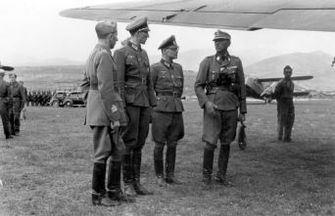
Waldheim meeting with an Italian general and SS General Artur Phleps at an airfield in Podgorica, Montenegro in 1943.
What Rosenbaum discovered while in Austria on behalf of the WJC was that Waldheim had not, as he claimed, been an unwilling draftee into the Wehrmacht who had sat out most of the war due to an injury and been entirely unaware of the atrocities going on around him.
Rather, as a German Army intelligence officer stationed in Yugoslavia and elsewhere in the Balkans during the war, Waldheim had significant involvement in atrocities carried out by the Nazi regime, such as the deportations of the Jewish communities of the Greek Islands and the city of Banja Luka in what is today Bosnia and Herzegovina.
The disclosure of Waldheim’s Nazi past didn’t stop the Austrian people from electing him president in 1986. But it made Waldheim persona non grata almost everywhere else in the world during his term, including the United States, where he fell under the purview of the Holtzmann amendment.



